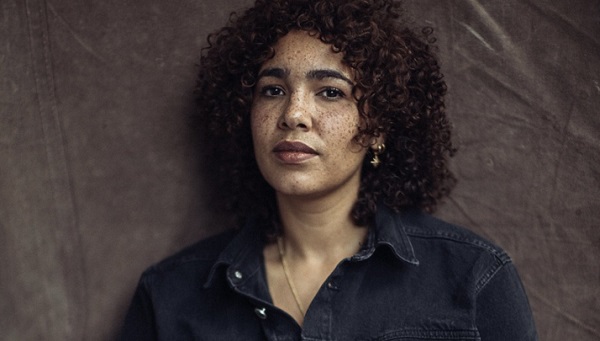
Jessica Carbone (Saveur Cookbook Club) reviews Code Noir: Afro-Caribbean Stories and Recipes, which “examines how colonialism has influenced the foodways of over 1,000 islands in the region,” and interviews author Lelani Lewis. [Many thanks to Peter Jordens for bringing this item to our attention. Photo above by Rahi Rezvani; see Food Inspiration]
The opening images of the cookbook Code Noir: Afro-Caribbean Stories and Recipes tell an enticing food story of the island region: first, a fistful of Scotch bonnet chiles, the ubiquitous spicy and colorful peppers of the islands. A pineapple with velvety green leaves, its flesh so ripe you can almost smell it through the page. Light streaming through a palm tree, a beach of brilliant white sand against jade-colored waters. Yet the beauty of Code Noir cannot be fully appreciated until you understand the historical context of Caribbean cooking. The book takes its name from the Code Noir manuscript, a set of decrees passed by King Louis XIV of France in 1685 (which remained in place until 1848) that dictated the behaviors of enslaved people, particularly in the French colonies like the French Antilles and what is now Louisiana in the United States. Despite the horrors of the document, it was the catalyst for writer Lelani Lewis to begin her work to document and pay homage to Caribbean foodways.
Such a project was no easy task, especially when there is no singular entity known as “Caribbean cuisine,” as the region comprises more than 1,000 islands, represented by more than 13 ethnic groups and many languages. It also bears the traces of multiple global histories and foodways, intermingling the foods of the colonizers–the Spanish, English, French, and Dutch–with those of the colonized, the African, Asian, and Indigenous peoples. As Lewis acknowledges, “there is no island in the Caribbean that hasn’t been tossed back and forth like a marble on a schoolyard,” and yet the many intermingling ingredients and traditions of the region’s dishes suggest that food bears the traces of its history. For example, a recipe for the Caribbean favorite of escovitch fish, a celebratory platter of fried red snapper, bears a vinegary batch of pickled peppers and name that connects it to the Spanish term “escabeche,” yet features allspice, thyme, lime juice, and of course Scotch bonnets, all native ingredients to the region. Similarly, the Grenadian dish of saltfish souse, where flaked saltfish and crunchy peppers top fluffy baking powder biscuits, reminds us of the ubiquity of saltfish in the transatlantic slave trade.
For Lewis this project had tremendous personal as well as professional significance. Born to an Irish mother and Grenadian father, Lewis grew up in the Streatham district in South London, where a local Caribbean community had sprung up between the late 1940s and the 1970s in response to the United Kingdom’s labor crisis. Though she grew up cooking and eating Caribbean food, Lewis learned about her heritage through a diasporic lens, and only visited the Caribbean a few times in her childhood. As a result, her table was a pan-Caribbean feast: “I grew up eating Trinidadian and Guyanese roti, Jamaican saltfish and ackee, Haitian pikliz, flying fish from Barbados.” These foods sparked her insatiable curiosity for Caribbean food culture, and led her to start her research platform, Code Noir, in 2020. As Lewis told me, digging deep into the stories of Caribbean foodways was her way of reconciling the many parts of her identity. Though Lewis now lives in Amsterdam with her family, I spoke with her while she was on holiday in her father’s homeland of Grenada, where she continued to think about the dishes she encounters as a path to empathy and solidarity, and a long-overdue reckoning with culinary history, both terrible and delicious.
At the core of this project is this consideration of what you call a “monstrous document,” the “Black Code” of 1685. Can you summarize what those laws were?
The Code Noir manuscript was very dehumanizing; it basically laid out laws on how to manage and place enslaved Africans. It covered everything from how many grams of food could be given to an enslaved adult versus to a child, to the question of who owned a child if an enslaved person were to give birth. It also detailed some of the punishments that were given if they tried to escape, from branding to amputation to death. Reading that document and reading through the actual laws was a painful thing to put myself through, but it was a necessity to understand what came before me; what my culture was built on. And it’s also necessary for people to understand that, because so many different cuisines around the world–especially from colonized places–have been born from adversity and pain. We can’t bypass that history; we have to face up and acknowledge it. And then we have to invert it, to show that this food and this culture is a beautiful triumph over that adversity. It’s colorful. It’s diverse, it’s tasty.
Before I embarked on the project. I didn’t have much knowledge about Caribbean food and history. I was researching for about a year and a half before I even found the title for the project, in Jessica B. Harris’ book Sky Juice and Flying Fish. The name itself felt so provocative, especially once I fully understood what the code had done and was such a perfect summary of the dark history that informs Caribbean food and culture. But I also really wanted to turn the darkness of that history on its head. Because while so much of Black history is tied up with suffering and sorrow, it’s also important to see the triumph and the beauty that emerged from such limited resources. So coming from an informed place, and being able to explain in clear terms the diversity of this cuisine and culture, was really important to me. And all of that had to come from a place of really deep research. [. . .]
Your chapter on snacks (“limin’,” pronounced “lime-in,”) suggests a specific regional attitude about gathering and hanging out. But you also have a whole chapter on the “low & slow” foods that anchor celebrations. What dishes do you think capture the Caribbean approach to pleasure and hospitality?
Limin’ is really the happy hour of Grenada–I just picked up a tourist magazine while I’m here, and it’s all about limin’ and how to do it right–how to relax when everything you’ve done has been done for the day. There are some great foods in that chapter, like aloo (potato) hand pies, and these delicious peppered shrimp sold all over the place in Jamaica. And of course pasteles, which can be snacks, but are also a celebratory food. So, for example, Caribbean food can be quite laborious, and I also have those in the book as well. Like curry goat—it takes hours to cook, and it’s a real labor of love. [. . .]
When you look at the evolution of these dishes throughout history, what do you get excited about in contemporary Caribbean cooking?
My first thought when you ask about that is whether we’re talking about an elevation of cuisine. A lot of my work involves talking about decolonization, and how looking at the history and celebrating the diversity of food is a way of decolonizing, because so much of the value that we put into the culinary world is oftentimes put on European cuisine. But these recipes have been tested for hundreds of years and we don’t need to compare it to how European food is presented, or how European techniques are incorporated. So what drives me is to learn more about the background and the culture and dishes that I don’t know about. For example, here in Grenada, I’ve just tasted oil-down, which is their national dish, a slow-cooked stew with green bananas, yams or sweet potato, plantains, callaloo, chicken, sometimes pigtails, layered bit by bit then cooked down with fresh coconut milk, and it is just stunning. So if I do get the opportunity to cook another book, I will. I would love to put that in, and I would also just love to go to different islands and learn more about the diversity in Caribbean cuisine.
There are so many recipes I love in this book, and I want people to dig deeply into the things they don’t know much about. I really love the Trini Doubles, especially the seasoning that goes on them. Green seasoning is a very simple recipe; it can be blended up easily, and you add it to almost any dish you want—it’s a flavor bomb. I really enjoy baigan choka, the roasted eggplant over a coconut tun (a kind of polenta seasoned with a tadka topping of shallots, garlic, and ginger). But then also the curry goat, because curry goat is one of my favorite dishes, which you can tell from how I’m slobbering all over it. The peppered shrimp as well, which are so gorgeous and easy to make. Ultimately, I want people to see how food is a universal tool for connection, and a means of surpassing our differences. [. . .]
For full article and recipes, see https://www.saveur.com/culture/lelani-lewis-afro-caribbean-cookbook
[Photo above by Rahi Rezvani from https://www.foodinspiration.com/nl/de-geschiedenis-van-kolonialisme-zie-je-terug-in-eten/.]
Jessica Carbone (Saveur Cookbook Club) reviews Code Noir: Afro-Caribbean Stories and Recipes, which “examines how colonialism has influenced the foodways of over 1,000 islands in the region,” and interviews author Lelani Lewis. [Many thanks to Peter Jordens for bringing this item to our attention. Photo above by Rahi Rezvani; see Food Inspiration] The opening images







